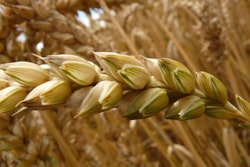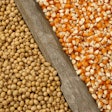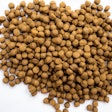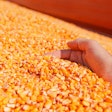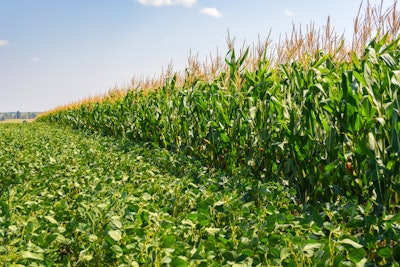
Corn and soybean futures ticked upward last week after months of declines on rumors that dry weather could affect this year’s crops in the U.S. Midwest.
Soybean futures have seen particularly steep increases, according to James Mintert, director of the Center for Commercial Agriculture at Purdue University. Soybeans hit a low on May 31, and by June 15 had climbed US$1.60 per bushel, he said during a broadcast on June 15.
The U.S. Department of Agriculture (USDA) maintained trend-line yield estimates for this year’s crop in its latest World Agriculture Supply and Demand Estimates reports. But analysts' eyes were fixed on the weather, which put 45% of major crop-producing areas in some stage of drought by June 6, Mintert said. Crop conditions have begun to decline throughout the Midwestern U.S., and markets appeared particularly reactive to weather news late last week when the three largest weather models in the U.S. aligned to forecast ongoing dryness for the coming weeks.
“You can’t make too much of these crop ratings this early in the season, but it is unusual to see that low of a percentage of the crop rated good to excellent,” he said during a separate broadcast on June 13.
Projections by Nathanael Thompson, an associated professor of agricultural economics at Purdue University put the potential price spread for this year’s crop at US$4.74 to US$6.14 per bushel for corn, and US$11.32 to US$13.58 for soybeans, although he noted that his figures did not include the impact of the recent price rally.
While weather in the U.S is the biggest factor driving markets, it isn’t the only trend impacting corn and soybean prices. The percentage of soybean oil used to produce biodiesel hit 44% in 2022, up from 36% in 2020 and is expected to continue to grow, Mintert said. However, Thompson said it was still too early to say whether oil, which is conventionally a byproduct of soybean meal production, will overtake meal as the primary driver of soybean production in the U.S.
Overall world stocks of soybeans and corn continue to rise as Ukraine continues to defy expectations for crop production, and as South America recovers from its own weather woes. However, Mintert said some questions about how the South American crop ultimately fared last winter — particularly in Argentina — may have also played a role in last week’s price rally.




